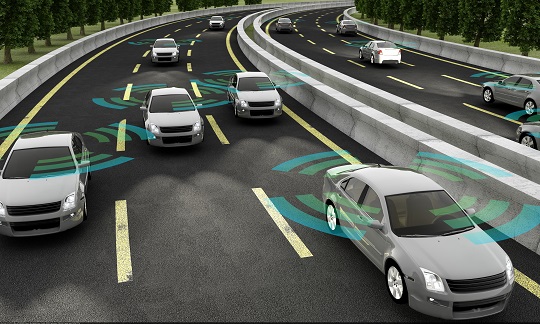The Evolution of Autonomous & Connected Vehicles

A few years ago, 2020 seemed a long way out. That was the year that many manufacturers earmarked for their self-driving car rollouts. Now that 2020 is just three years away, some carmakers are kicking the can to 2021. They’ve learned that it’s one thing to make the cars, and quite another to get them onto the road. To achieve the later, carmakers must traverse a web of decisions involving multiple parties, from lawmakers to consumers.
“It’s clear now that autonomy in 2020 does not mean self-driving cars sharing the highways,” said the auto tech hub TU-Automotive. We’ll certainly see cars by then that are more autonomous, but fully autonomous? Maybe at your city bus stop. Not so likely in your garage.
Indeed, public transportation has emerged as an important stepping stone to the autonomous ideal. It “seems to be the shape of autonomy to come for the next decade or two: bus- or taxi-like services operating along pre-determined routes in limited areas that are probably not open to private vehicles,” said TU-Automotive.
It’s important for connectivity as well. “Many cities have begun smart transportation initiatives to optimize their public transportation routes, create safer roads, reduce infrastructure costs, and alleviate traffic congestion as more people move into cities,” according to Business Insider. Sensors can track vehicles by GPS. Drivers can find and reserve public parking spaces before they roll up. Smart cities can leverage driving data to optimize their infrastructure planning. And, of course, bus-goers can access the Internet while they ride.
It turns out busses and taxis can get through some doors more easily than cars. For both autonomous and connected vehicles, standardization remains a thorn in the side of smart cars, as cyber security threats adapt to target connected cars, and self-driving cars strive to meet the safety guidelines that lawmakers have required of them before they can lay claim to the road.
The news isn’t just happening in the United States. This April, the forum Connected Car Insurance Europe will be meeting in London, where they’ll discuss the most important issues affecting insurers in the connected car space:
- New mobility trends that come of customizing episodic coverage to digital products
- New risk factors
- The cyber security exposures of connected vehicles
- The impact on claims processes and loss experience – how often cars collide and how much it costs to repair them when they do
- Where value-added services fall short
All told, 2017 should be an interesting year. We can expect to see more connectivity and autonomy in the world of public transit. We can expect carmakers to continue pushing to make those features available to regular people as well. Insurers will continue to face questions about how to adapt claims for new scenarios and uncharted territory, and old assumptions will continue to be challenged.
Are you ready for the new year?
We are. Talk to Silvervine about equipping your core insurance software to adapt to an unfolding future, and stay in touch for connected car updates throughout 2017. Download our Losing Your Legacy report to learn more.
